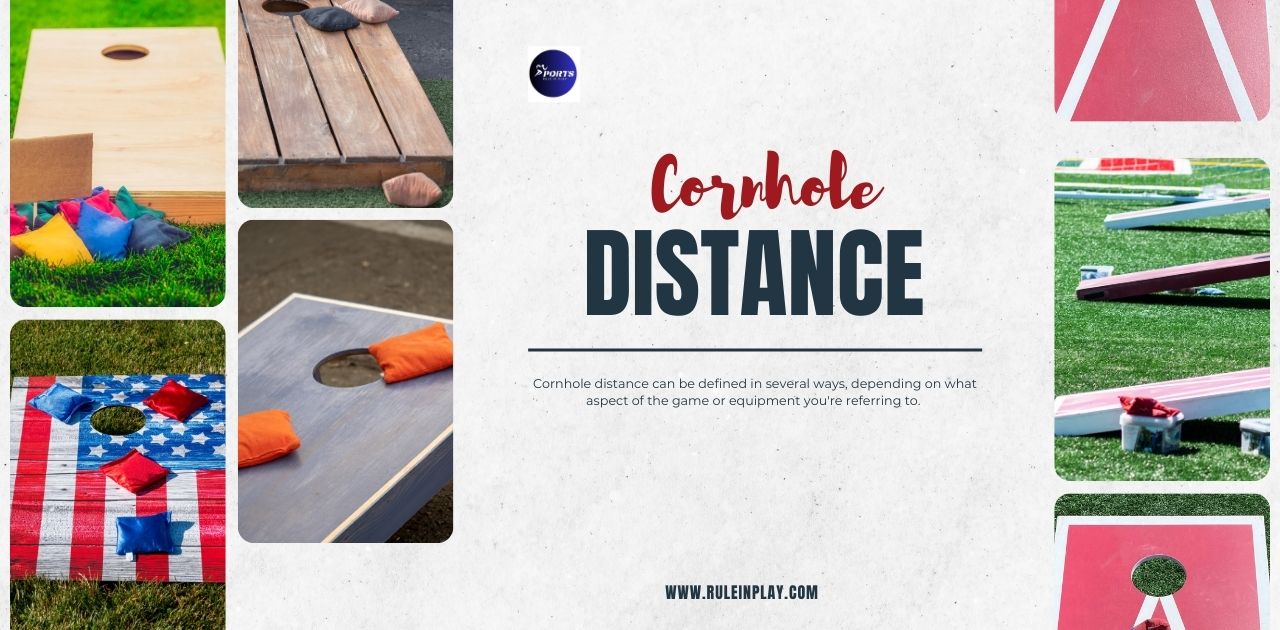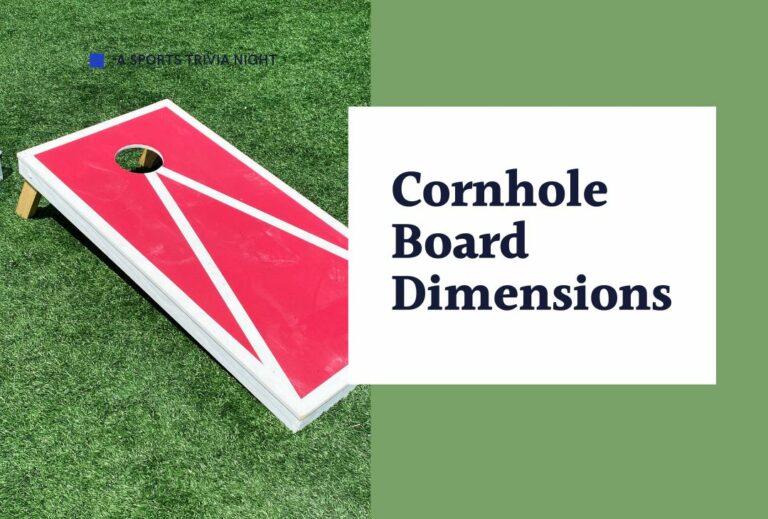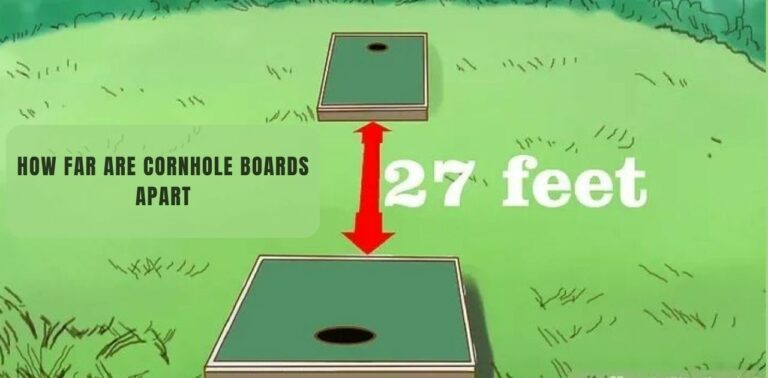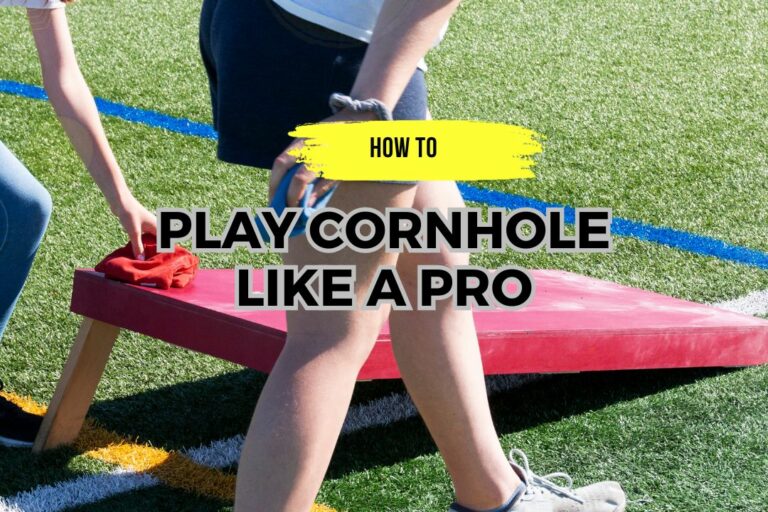Cornhole Distance: Rules, Techniques, and Tips for 2023
Cornhole, a popular backyard game that has gained immense popularity in recent years, is a fantastic way to have fun with friends and family. To become a cornhole pro, it’s crucial to understand the game’s fundamentals, including cornhole distance rules, cornhole throwing distance, cornhole regulation rules, cornhole pitching distance, and cornhole playing distance. In this comprehensive guide, we’ll dive into the world of cornhole distance and equip you with the knowledge to become a cornhole champion.
Cornhole: A Brief Overview
Cornhole, also known as bean bag toss, is a simple yet addictive game that people of all ages can enjoy. It involves tossing small bags filled with corn kernels or beans onto a raised platform with a hole in it. The primary objective is to throw the bags through the hole or land them on the platform to score points. Cornhole is typically played in teams of two, and the team with the most points at the end of the game wins.
Cornhole Throwing Distance
The distance from which you throw the cornhole bags is a critical aspect of the game. The standard throwing distance for cornhole is 27 feet between the front edges of the two cornhole boards. This distance is measured from the front edge of the player’s board to the front edge of the opponent’s board. It’s essential to maintain this precise distance to ensure fair play and a level playing field.
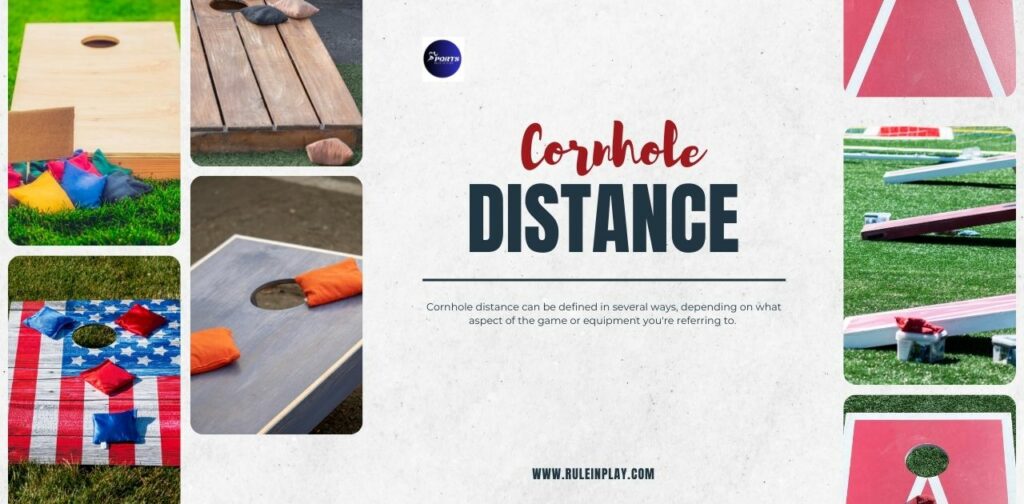
Perfecting Your Cornhole Throwing Technique
Achieving accuracy and consistency in your throws is essential to excel in cornhole. Here are some tips to help you master the cornhole throwing distance:
- Stance and Balance: Stand with your feet shoulder-width apart and your weight evenly distributed between both feet. This balanced stance will provide stability and accuracy when you release the bag.
- Grip: Hold the cornhole bag with a relaxed grip, using your dominant hand. Keep your thumb on top and your fingers underneath the bag. Experiment with different grips to find what feels most comfortable and accurate for you.
- Throwing Motion: The cornhole throwing motion should be smooth and controlled. It’s essential to avoid excessive force or wild swings. Focus on a consistent and gentle toss, ensuring the bag rotates as it travels through the air.
- Aim: Align your body and feet with the target, which is the hole on the opposing board. Keep your eyes on the target and concentrate on hitting the hole or landing the bag on the board.
- Practice: The key to improving your cornhole throwing distance is practice. Spend time honing your skills and experimenting with different throwing techniques. With practice, you’ll develop muscle memory and improve your accuracy.
Cornhole Regulation Rules
Cornhole is a game that takes its rules seriously. To ensure fair play and competitive matches, there are specific regulations that players must follow. Understanding these regulations is crucial for both casual players and those aspiring to compete in cornhole tournaments.
American Cornhole Association (ACA) Rules
The ACA is the official organization that oversees the game of cornhole in the United States.. Here are some of the key regulations set by the ACA:
- Board Dimensions: Cornhole boards must have a playing surface that measures 48 inches in length and 24 inches in width. The hole in the board should have a diameter of 6 inches, and its centre should be 9 inches from the top of the board and 12 inches from each side edge.
- Cornhole Bags: Standard cornhole bags should be made of fabric and filled with corn kernels, weighing approximately 16 ounces each. The bags must measure 6 inches by 6 inches.
- Scoring: In cornhole, there are different scoring methods, but the most common one awards three points for a bag that goes through the hole, one point for a bag that lands on the board, and no points for bags that miss the board.
- Throwing Distance: As mentioned earlier, the regulation throwing distance, according to ACA rules, is 27 feet between the front edges of the boards.
- Game Play: Cornhole matches are typically played to a predetermined number of points, often 21 or 25 points. Teams take turns throwing four bags each per round, and the team with the most points at the end of the game wins.
- Fouls: There are specific fouls in cornhole, such as stepping past the foul line during a throw or touching the board during an opponent’s throw. Familiarizing yourself with these rules will help you avoid penalties.
Other Variations In Cornhole Distance
It’s worth noting that while the ACA rules are widely accepted, there are regional and backyard variations of cornhole with different rules and scoring systems. Before playing in a tournament or with a new group, it’s a good idea to clarify the specific rules you’ll be using to ensure everyone is on the same page.
Cornhole Pitching Distance
The cornhole distance includes pitching distance as well, which is the distance between you and the cornhole board when you make your throw, which is crucial for achieving accuracy and consistency. As mentioned earlier, the standard pitching distance in cornhole is 27 feet. However, some variations and casual games may allow for shorter distances to accommodate younger players or beginners.
Adjusting the Pitching Distance
If you’re playing with kids or beginners, it’s essential to consider adjusting the pitching distance to make the game more accessible and enjoyable. Here are some suggestions:
- Junior Players: For younger children, you can reduce the pitching distance to 15 feet or even less. This allows them to participate and have fun without the frustration of trying to throw from the standard distance.
- Beginner Players: If you’re playing with beginners or individuals new to cornhole, you can start with a shorter distance, such as 20 feet. As they become more comfortable with the game, gradually increase the distance to 27 feet.
- Practice Distance: During practice sessions, it’s a good idea to start closer to the board and gradually move back to the regulation distance as your skills improve. This progressive approach can help you build confidence and accuracy over time.
- Tournament Play: When competing in official cornhole tournaments or matches, always adhere to the regulation pitching distance of 27 feet to ensure fairness and consistency.
Cornhole Playing Distance
The playing distance in the cornhole refers to the space required for setting up and playing the game. To create an enjoyable and safe playing environment, consider the following factors:
- Playing Surface: Ensure that the playing surface is flat and level. Cornhole boards should be placed on a stable surface, such as grass, sand, or concrete, to prevent wobbling or tipping during gameplay.
- Safety: Maintain a clear area around the cornhole boards to prevent tripping or collisions. Keep spectators and other objects at a safe distance from the playing area.
- Spacing Between Boards: When setting up multiple cornhole boards for a tournament or friendly competition, leave enough space between them to prevent interference with neighboring games. A distance of at least 10 feet between boards is recommended.
- Sun and Wind: Consider the position of the sun and the direction of the wind when setting up the boards. Players should ideally face away from the sun to avoid glare, and the wind direction can affect the trajectory of the bags, so adjust your throws accordingly.
- Comfort: Provide seating and shade for players and spectators, especially during hot or sunny days. Comfortable seating and refreshments can enhance the overall cornhole experience.
Wrapping Up
Mastering cornhole distance is a fundamental aspect of becoming a skilled cornhole player. Whether you’re playing for fun in your backyard or competing in a tournament, understanding the cornhole throwing distance, cornhole regulation rules, cornhole pitching distance, and cornhole playing distance is essential for success.
Remember that cornhole is not just a game of skill but also a game of strategy and precision. Practice your throws, familiarize yourself with the rules, and adapt your pitching distance as needed to improve your game. With dedication and determination, you can become a cornhole champion and enjoy countless hours of competitive fun with friends and family. So, go out there, perfect your cornhole skills, and aim for that elusive hole-in-one!

